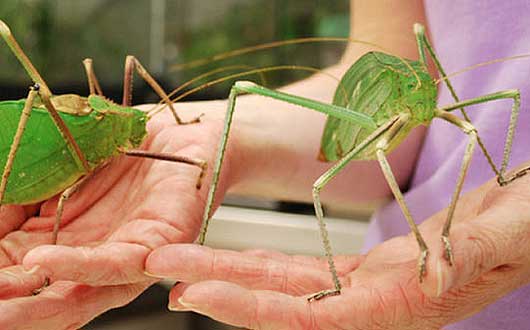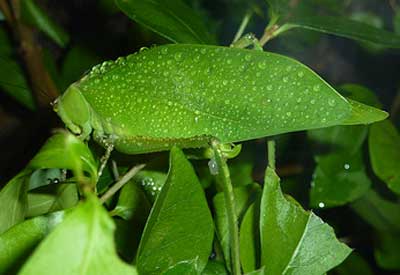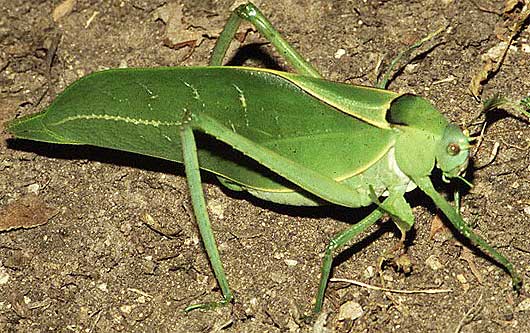Giant Katydid – Long-Legged Green Leaf Imitator

Giant long-legged katydids are the largest of the Tettigoniidae family. The family itself contains over 6,400 species. They’re known by some as long-horned grasshoppers although they are much more closely related to crickets than grasshoppers. This species can grow up to 6 inches (15 cm) in length.
Giant katydids like all katydids have long antennae which are known to exceed their own body length. The male of the species have sound producing organs on the hinds of their wings which they create sound by rubbing together (known as stridulation).

The giant katydid with their long legs may appear a frightening specter but in reality they’re very gentle and much more scared of you than you are of them. Their natural habitat is Malaysia living the forests on the mountain slopes. It has large leaf-like wings which are great for camouflage but despite their size, this species rarely chooses to fly. Similarly, they have very long legs but cannot jump very well.

Their behavior is hard to monitor but it’s known they use their long antennae to find food and attract a mate. During the daytime their are generally inactive and can be seen stationary upon leaves and bushes. They mainly eat vegetation but some can be found to be predatory and feast upon smaller bugs and insects. As mentioned the males have sound producing organs and these are used to produce an extremely high pitched noise to call for a female. It’s believed to be one of the loudest insects in existence.

Female katydids are equipped with a long sword-like egg-laying organ (ovipositor) which they use to lay eggs. Their eggs are long and narrow and are laid in rotting wood to grow into offspring. Another interesting fact is that these creatures are believed to have the biggest testes of any animal recorded. The male’s testes can account for up to 14% of their body weight!

For they most part, the details so far are very vague and unspecific as their habitat is very well hidden and not in a densely populated area. We await young scientist who will go into the deep Malaysian forest to watch for these big green insects.
